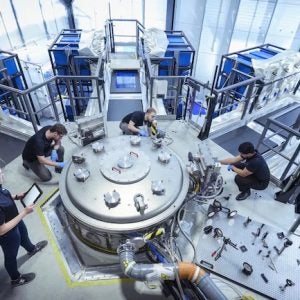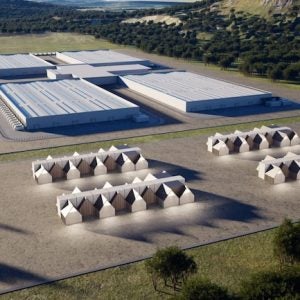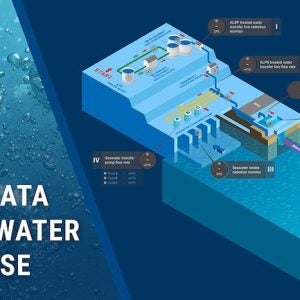Japan’s Kashiwazaki-Kariwa NPP in Niigata Prefecture will not be restarted until fiscal 2022 at the earliest, according to a new business plan released by Tokyo Electric Power Company Holdings (Tepco) on 21 July. In the first revision of the document in four years, Tepco also outlined plans to invest up to JPY3,000 billion ($27bn) by fiscal 2030 for decarbonisation efforts and outlined other targets.
The plan is designed to raise funds for compensation, decontamination and decommissioning following the 2011 Fukushima nuclear disaster. As in the previous plan formulated in 2017, the company has maintained its goal of generating future annual profits of JPY450 billion after annual decommissioning and compensation costs of around JPY500 billion.
Tepco President Tomoaki Kobayakawa told a press conference that support from local residents would be a prerequisite for restarting NPPs. Referring to recent revelations about inadequate security measures at the Kashiwazaki-Kariwa plant, Kobayakawa emphasised that "restoring (public) trust is a company-wide issue." Following reports of a number of cases of unauthorised access at the plant since January 2018, the Nuclear Regulation Authority (NRA) earlier this year effectively banning Tepco from restarting the plant until corrective actions are taken.
Although Kashiwazaki-Kariwa was unaffected by the March 2011 earthquake and tsunami, which damaged Tepco's Fukushima Daiichi NPP, all seven of the plant’s reactors had been offline for two to three years following the 2007 Niigata-Chuetsu earthquake, which caused damage to the site but not to the reactors. While the units were offline, work was carried out to improve the plant's earthquake resistance.
Tepco applied for NRA approval of its design and construction plan for Kashiwazaki-Kariwa units 6 and 7 (1356MWe advanced boiling water reactors) in September 2013. It submitted information on safety upgrades across the site and at those units, which began commercial operation in 1996 and 1997 and were the first Japanese boiling water reactors to be considered for restart.
The company's latest business plan includes an outlook for future revenue and expenditures, assuming that unit 7 of the Kashiwazaki-Kariwa plant would be restarted in October 2022 at the earliest, and unit 6 in April 2024. It also said that one of units 1-5 would be restarted in 2028.
The new business plan revised the cost benefit of restarting a reactor putting it at about JPY50 billion per unit, down from JPY90 billion in the previous plan, reflecting changes in fuel prices and other factors. The plan also says Tepco also intends to allocate JPY1,000 billion yen to the development of renewable energies such as wind power, and JPY2,000 billion for power grid expansion and NPPs. Tepco aims to halve fiscal 2013 levels of carbon dioxide emissions from power generation by fiscal 2030, and achieving carbon neutrality by 2050.
Tepco said it will also work to counter negative rumours over a plan to release treated water containing radioactive tritium from the Fukushima Daiichi site into the ocean, which was adopted by the government in April.
According to the revised business plan Tepco aims to resume construction of the Higashidori NPP (two 1385 MWe Advanced Boiling Water Reactors) in Aomori prefecture, which was suspended following the Fukushima accident. It will also continue to promote the use of mixed oxide (mox) fuel. Jointly with other members of the Federation of Electric Power Companies, it will develop a new mox plan for 2030, with at least 12 reactors using the fuel by 2030.
The Nuclear Damage Compensation and Decommissioning Facilitation Corp, which oversees Tepco, will continue to monitor the company's efforts to reform its management, and will re-examine the extent of government involvement in the company after three years.
“We’ll remake Tepco into a company that can meet the expectations of society,” Chairman Yoshimitsu Kobayashi told industry minister Hiroshi Kajiyama after submitting the plan to the government for approval.






